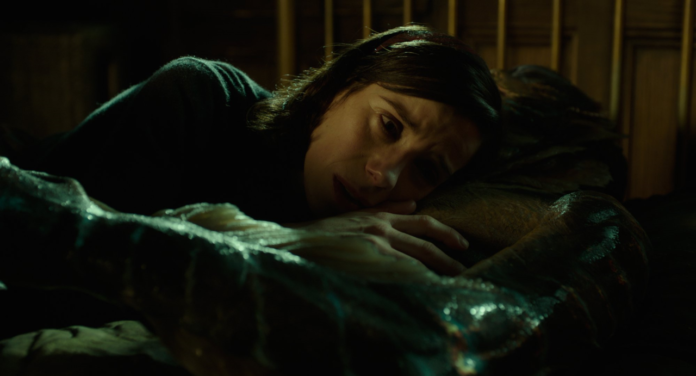As far as I can tell, the work of Mexican director Guillermo del Toro can be loosely divided into two categories. You’ve got what can broadly be referred to as “Hollywood” movies, which include Hellboy, Blade II, and Pacific Rim. The second category reads like a case study on macabre sort of magic realism, Cronos, The Devil’s Backbone, and Pan’s Labyrinth all deal with tragically human stories couched within fantastical incarnations of the real world.
In a pattern that’s perhaps too revealing when it comes to the kinds of movies Hollywood throws its weight behind, all of del Toro’s conventional action flicks are shot in English, and all of his more individual or independent productions are shot in Spanish. Whether this is a coincidence or not is up for debate. (After all, Crimson Peak, del Toro’s 2015 gothic romance was shot in English, and given a wide-release despite its slower pace and lack of jumpscares.)
The Shape of Water, a romance / origin story for Hellboy’s Abe Sapien character (played by Doug Jones), manages to bring to the forefront in an English-language setting the features of del Toro’s directing that make his Spanish-language films so captivating. There are certain conventions that run through del Toro’s work, such as a focus on monsters or characters deemed monstrous by society, as well as a preoccupation with “otherness,” which again surface in The Shape of Water. But where this film and Hellboy, for example, differ, is that the focus now isn’t on high-stakes action propped up by some vaguely-defined mythical backstory. Instead, The Shape of Water takes the infrastructure of his previous English-language films (the sets, budget, actors, even, to a degree, promotional coverage) and superimposes onto it his narrative preoccupation of telling compassionate love stories which just so happen to take place in cold, unwelcoming environments.
On that front, The Shape of Water sees two outcasts come together (one of them arguably more of an outcast; he is, after all, a lake monster,) and find some sort of happiness with each other. If the film’s plot is successful in holding our attention, it does so because, while being a CGI-heavy period piece, it focuses on the realism within magic realism to tell its story. Which is to say, that instead of arguing how a monstrous fish-man is a poignant allegory for humanity, del Toro focuses his energy on showing us the humanity of Jones’ character. Mostly, this is done through short, symbolic interactions with a janitor, Elisa Esposito (played by Sally Hawkins). While the plot itself is just about as Cinderella as they come, Del Toro’s patience in letting what’s ultimately this year’s weirdest on-screen romance unfold by itself lets the viewer focus on character relationships as they develop, as opposed to having to sit through scenes or plot points which exist only for the sake of action, or bear no relevance to the film’s central plot. (This patience also lets him avoid having to deal with being accused of preaching; the focus on character development instead of hitting plot points makes the story much more compelling.)
Is The Shape of Water the best love story of this year? Probably not, no. It’s not even del Toro’s best directorial feature (that honour goes to The Devil’s Backbone.) But The Shape of Water is (on top of being one of the most accessible of Del Toro’s movies) one of the most focused, interesting love stories Hollywood has come out with in a while. There’s no pandering, or heavy-handed attempts to say something universal about love. For the most part, The Shape of Water is as humble as they come.
It is weird as hell, though. But I suppose that comes with the territory.


